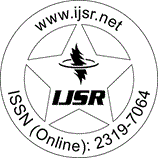Downloads: 24 | Views: 92 | Weekly Hits: ⮙2 | Monthly Hits: ⮙4
Research Paper | Biomedical Sciences | India | Volume 14 Issue 1, January 2025 | Popularity: 6.5 / 10
Skincare Technology: How AI, 3D Printing, and Nanotechnology Improve Skin
Snehal Kalyani
Abstract: The skincare industry is undergoing a significant transformation with the integration of advanced technologies such as Artificial Intelligence (AI), 3D printing, and nanotechnology. These innovations are revolutionizing product development, offering highly personalized treatments, enhancing product efficacy, and accelerating production timelines. AI enables precise skin analysis and predictive modeling for product success, while 3D printing allows for customized skincare devices and bioprinted treatments. Nanotechnology improves the delivery and stability of active ingredients, particularly in sunscreens and anti - aging products. This paper explores how these technologies collectively optimize skincare solutions and highlights the ethical and regulatory considerations necessary for their safe and equitable implementation. The convergence of these advancements signifies a new era in skincare, promising improved skin health and personalized solutions for consumers worldwide.
Keywords: Artificial Intelligence, 3D Printing, Nanotechnology, Personalized Skincare, Bioprinting, Nanoencapsulation, Predictive Modeling, Ethical Considerations, Skincare Innovation
Edition: Volume 14 Issue 1, January 2025
Pages: 802 - 803
DOI: https://www.doi.org/10.21275/MR25116115815
Make Sure to Disable the Pop-Up Blocker of Web Browser
